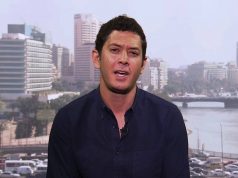Ashraf El-Ashmawi is an Egyptian author, judge, and legal scholar. He has written eight novels, which have been critically received. His books have been translated into several languages, including French, German, Japanese, and Italian.
The Lady of Zamalek, translated by Peter Daniel (Hoopoe, 2021), is his first novel to be translated into English.
The story The Lady of Zamalek is so vivid, so interwoven, so fast-paced. How much of it is based on real-life events and people?
I relied on history as the central idea. All the characters are from my imagination. They are not from real life. I don’t want to be a historian. History is about ten percent of the novel.
You have characters like Pauli Pasha or King Farouk and you have actual events like the 1967 war. They are there but I don’t want to present them as if it’s history; I just want to give them life.
Who is the main character in The Lady of Zamalek? How would you describe that character?
I don’t really want to specify who the main character is because this is the ruse of the book. It’s really up to the reader to decide who the real lady is. It could be anyone.
The novel deals with a society in a country which has undergone tremendous upheaval in the last fifty or sixty years, so at one point Zeinab does become a sort of Lady of Zamalek, but one could also think of Paula as the Lady because she was a lady before the revolution.
Maysa, the aristocrat, was also the Lady and of course, Nadia is your younger, post-revolutionary Lady of Zamalek. But I see Zeinab and Abbas as the prime movers of the events. The development of the secondary characters relies on these two main characters.
How did you build the plot, since there are different narrators and several time-lapses?
Building the plot of course is the hardest part. Actually, I started it in a completely different way, with a single third-person narrator, and writing in a linear way, chronologically, with one event leading to the next. After about four thousand words, however, I realized this was not the right approach.
I told myself if it is not working for me it won’t work for the reader. So I decided to use different narrators, each one mirroring or playing off the other, with flashbacks and time-lapses, to build tension and intrigue, and hold the reader’s attention.
One would imagine that a lot of research was necessary to describe the political context and historical background, as the novel begins in 1927 and unfolds through the Nasser and Sadat years, into the 1990s of the Mubarak era.
For this novel, I spent eight months doing just research, in historical archives and also field research, by going to the neighborhoods themselves, identifying places, hanging out with the people, and trying to get a sense of life in those neighborhoods.
Does working as a judge and legal scholar complement your writing?
Perhaps the two professions that most come into contact with human beings in a very intimate way are doctors and lawyers. Having been involved in the judiciary system for more than thirty years, I feel I have a deeper insight into human nature than those who view court cases from outside the profession.
I see how the victims of a crime are affected by the court process. I can see what drives some of them to crime—difficult circumstances, difficult society. In fact, I believe my writing has helped make me a more humane judge.





